
Case #361 - December 2013
A 27-year-old man in the U.S. Army, who had been stationed overseas in southeast Asia, sought medical attention for nausea, vomiting, and intermittent diarrhea. A stool specimen was collected in 10% formalin for Ova and Parasites (O&P) testing. A formalin-ethyl acetate (FEA) concentration was performed and a wet mount examined using 1000x magnification. Figures A-E show what was observed in few numbers. The objects in Figures A-C measured 18 micrometers on average; objects in Figures D and E measured 8.0 micrometers on average. Figures B and C shows two different focal planes of the same object. What is your diagnosis? Based on what criteria?
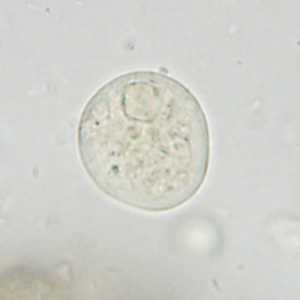
Figure A
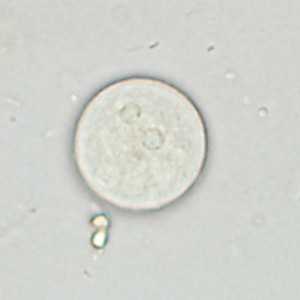
Figure B
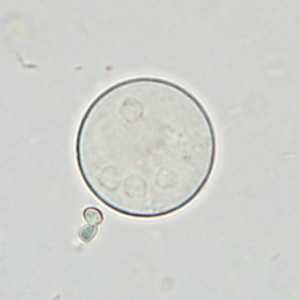
Figure C
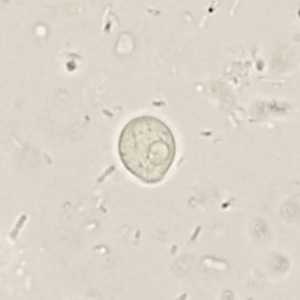
Figure D
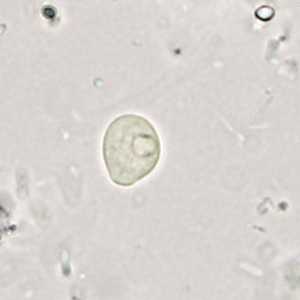
Figure E
Case Answer
Figure A showed a trophozoite of Entamoeba coli; Figures B and C showed a cyst of E. coli. Figures D and E showed cysts of Chilomastix mesnili. Diagnostic morphologic features included:
- a trophozoite with irregular peripheral chromatin and within the size range for E. coli.
- a mature cyst with more than 4 nuclei that also exhibited irregular peripheral chromatin and was within the size range for E. coli.
- pyriform cysts that were within the size range for C. mesnili exhibiting a cytostome and a large nucleus.
Both of these organisms are considered nonpathogenic and can reside in the large intestine. While neither species is regarded as a pathogen, their presence in stool can be indicative of fecal-oral contamination of a food or water source and does not rule-out the possibility of another gastrointestinal pathogen.
More on: intestinal amoebae; Chilomastix mesnili
Images presented in the monthly case studies are from specimens submitted for diagnosis or archiving. On rare occasions, clinical histories given may be partly fictitious.
DPDx is an education resource designed for health professionals and laboratory scientists. For an overview including prevention and control visit www.cdc.gov/parasites/.
- Page last reviewed: August 24, 2016
- Page last updated: August 24, 2016
- Content source:
- Global Health – Division of Parasitic Diseases and Malaria
- Notice: Linking to a non-federal site does not constitute an endorsement by HHS, CDC or any of its employees of the sponsors or the information and products presented on the site.
- Maintained By:


 ShareCompartir
ShareCompartir